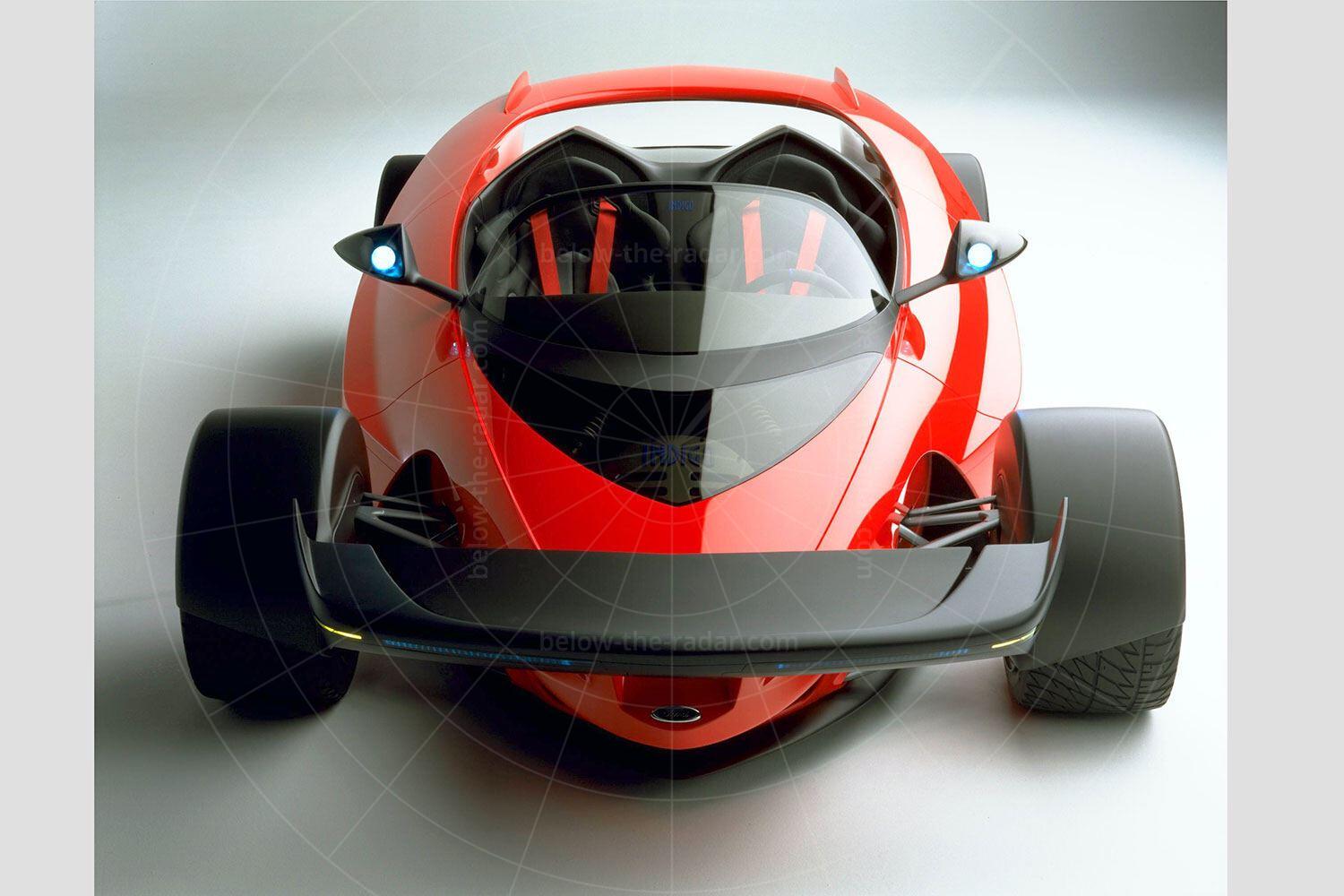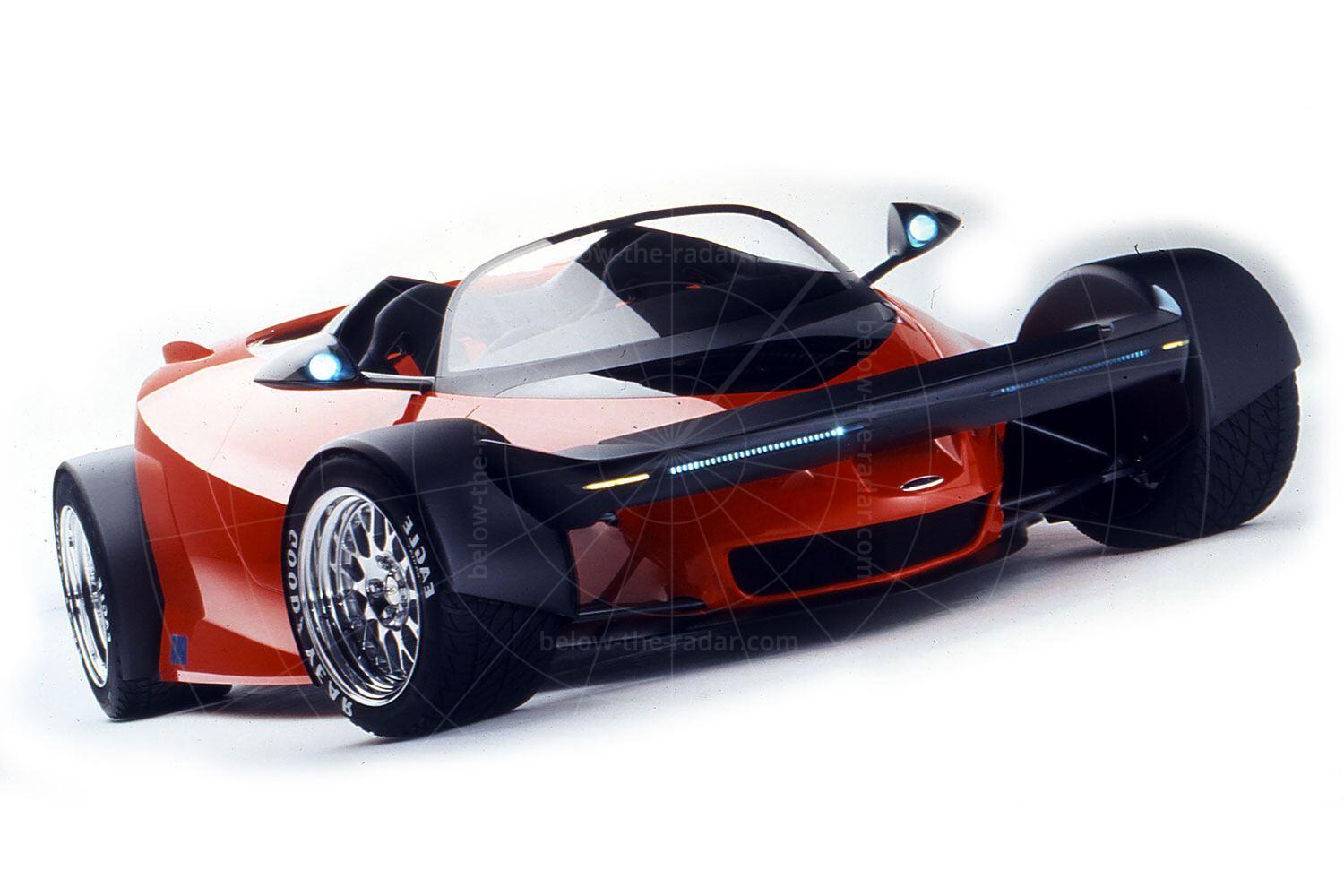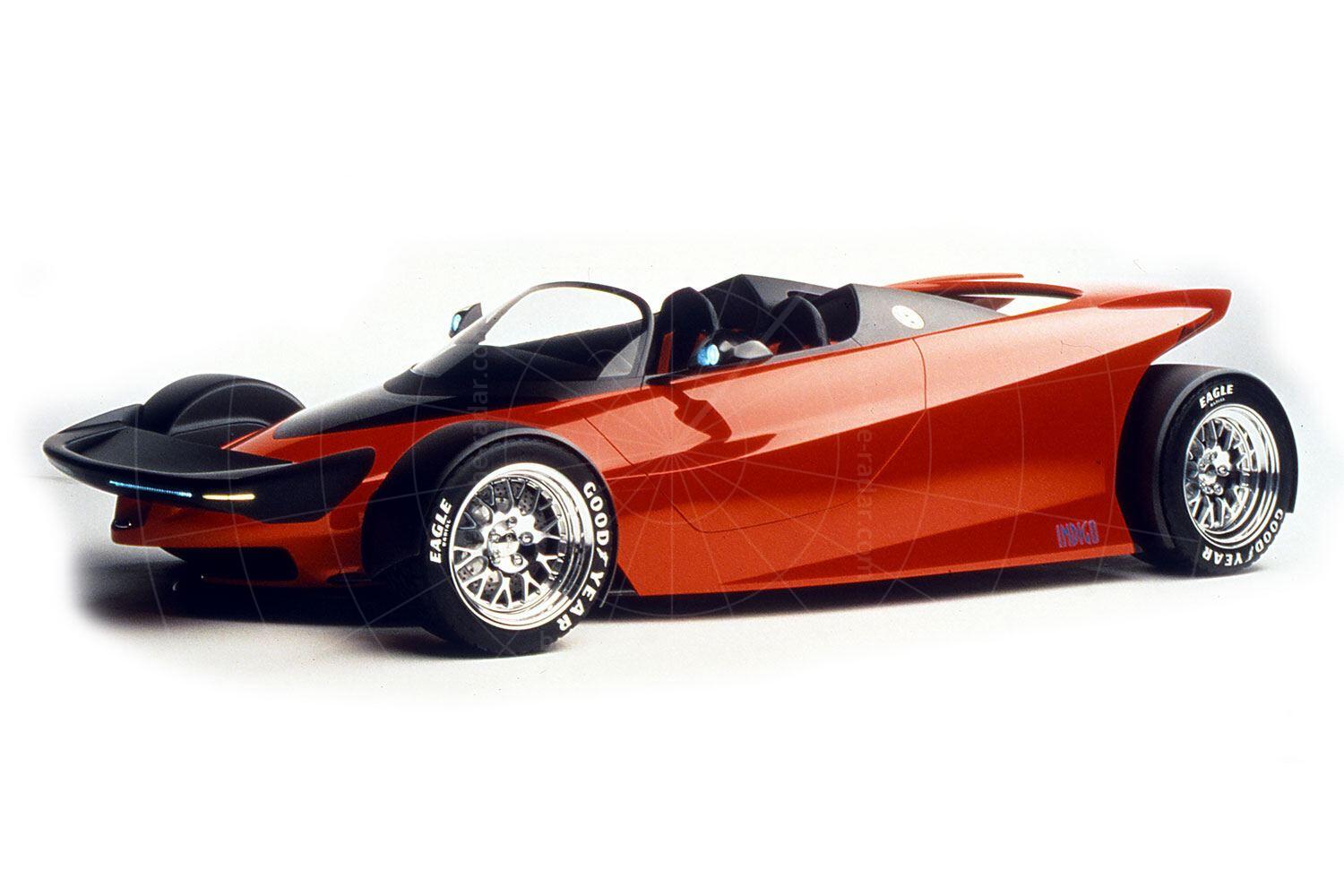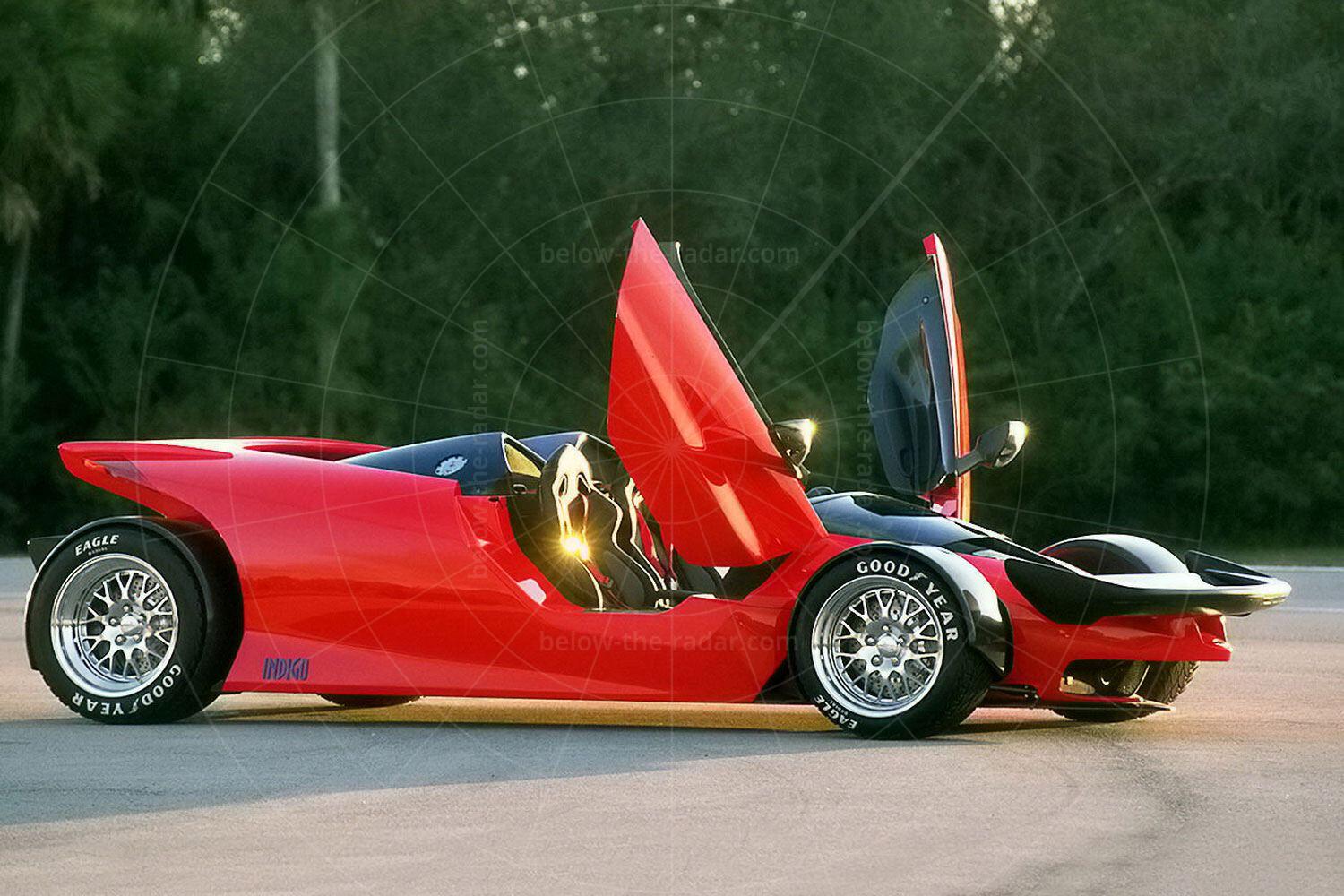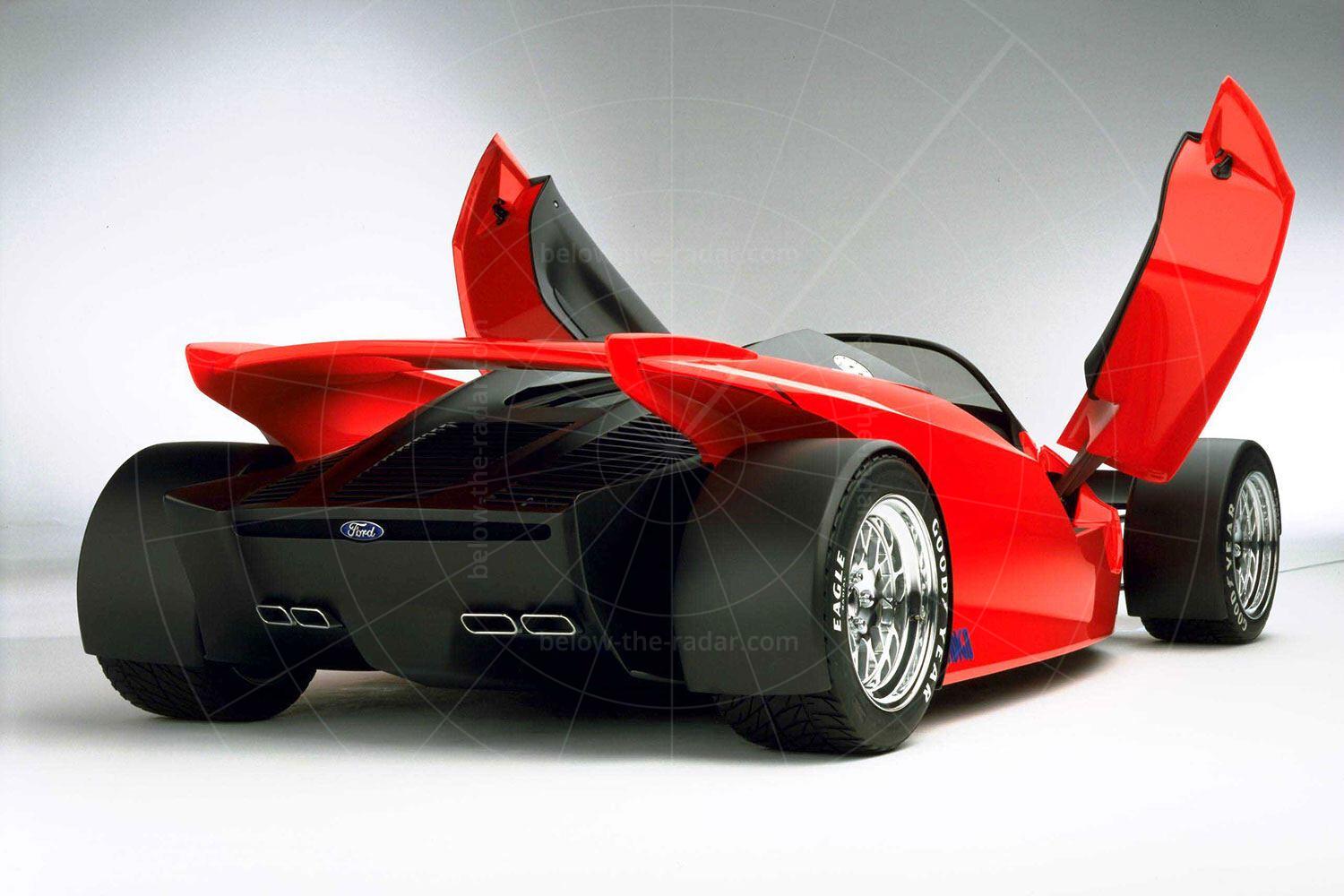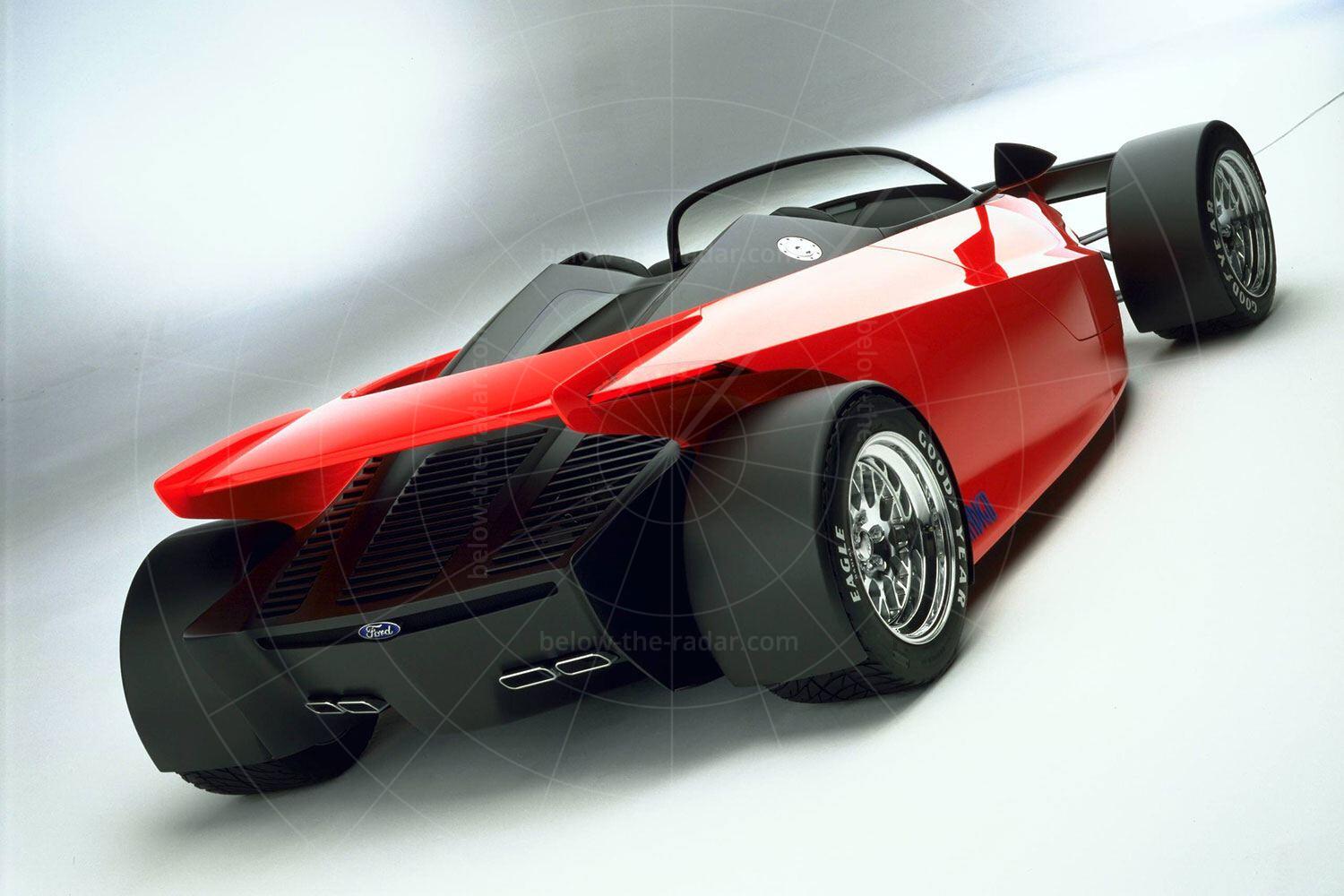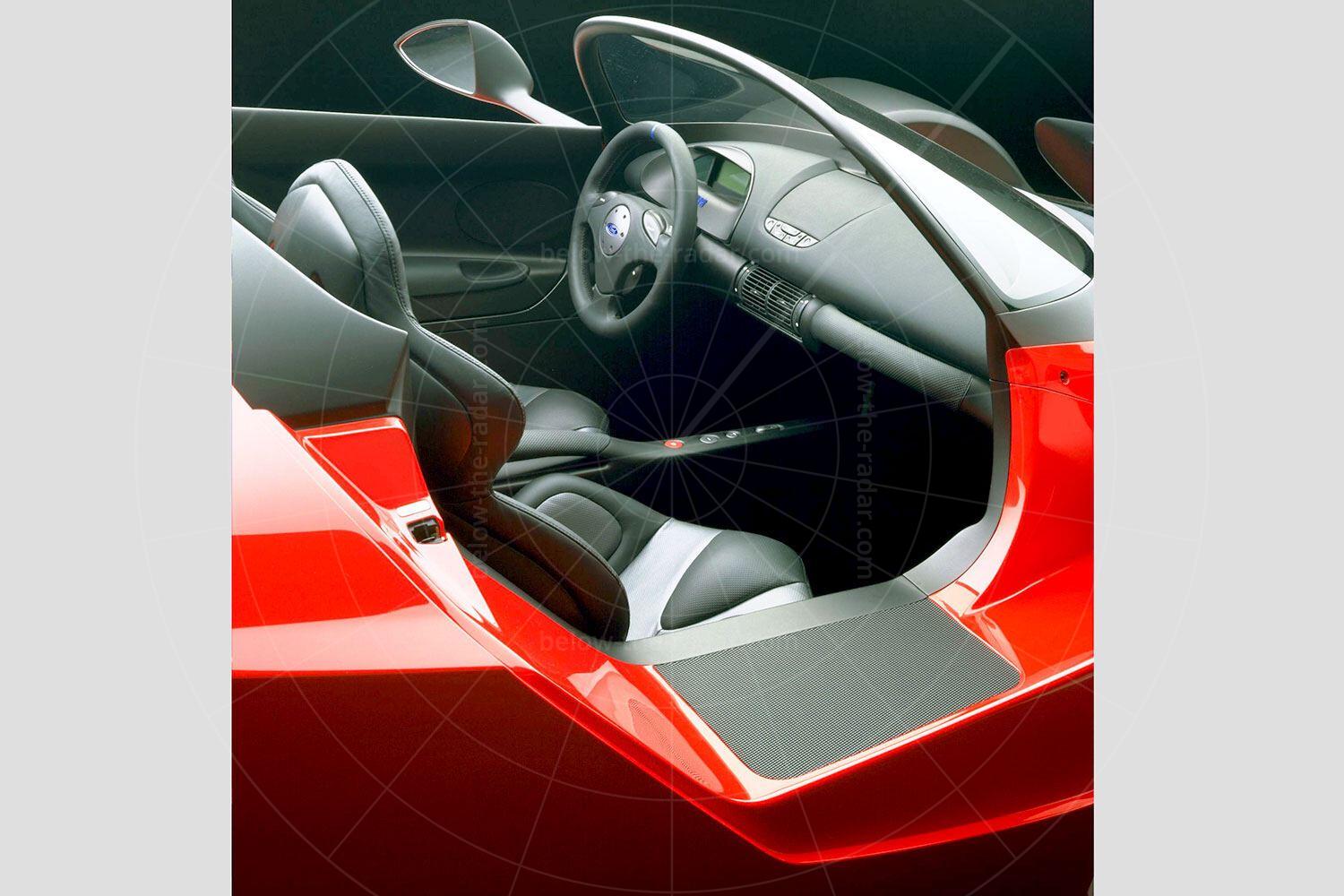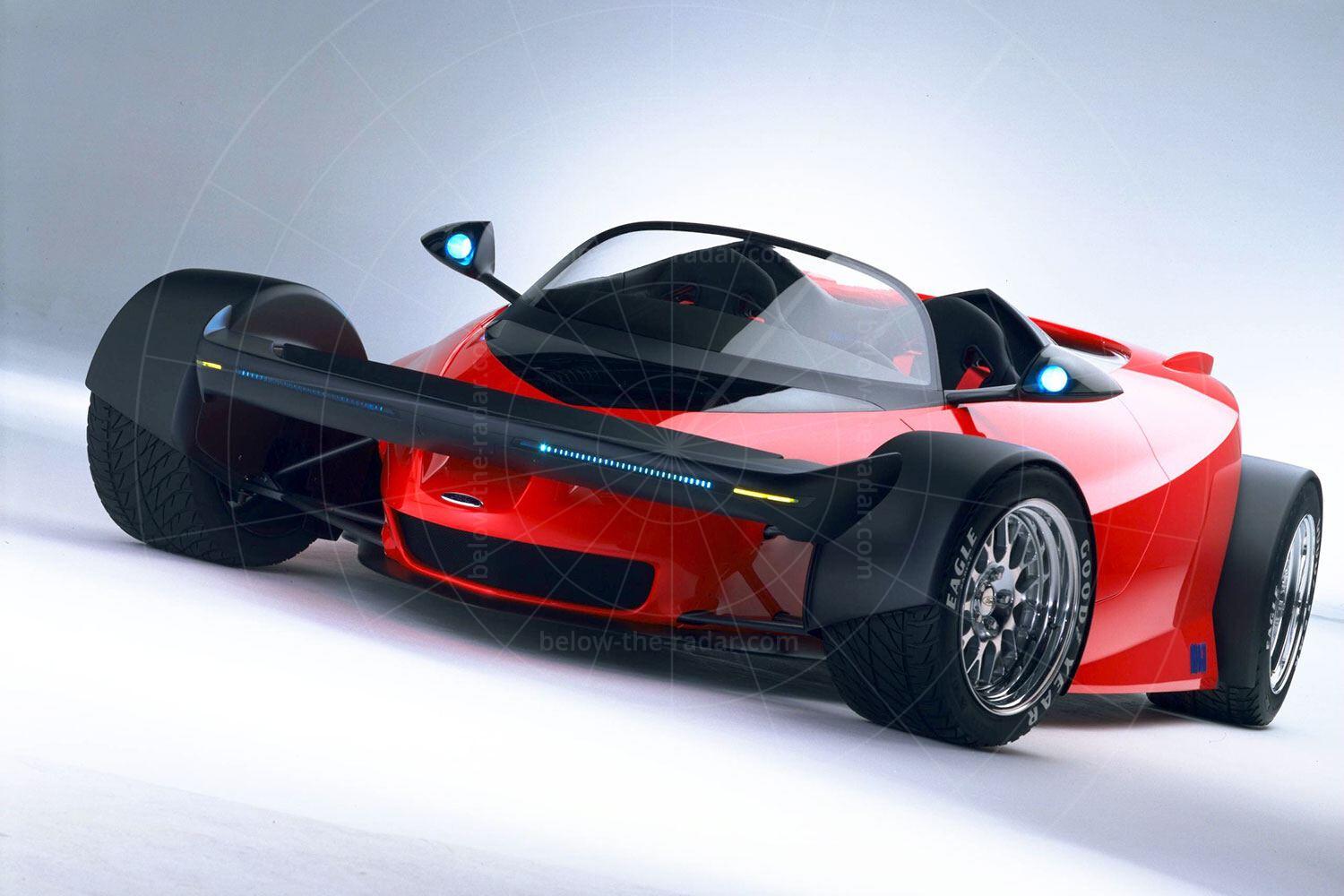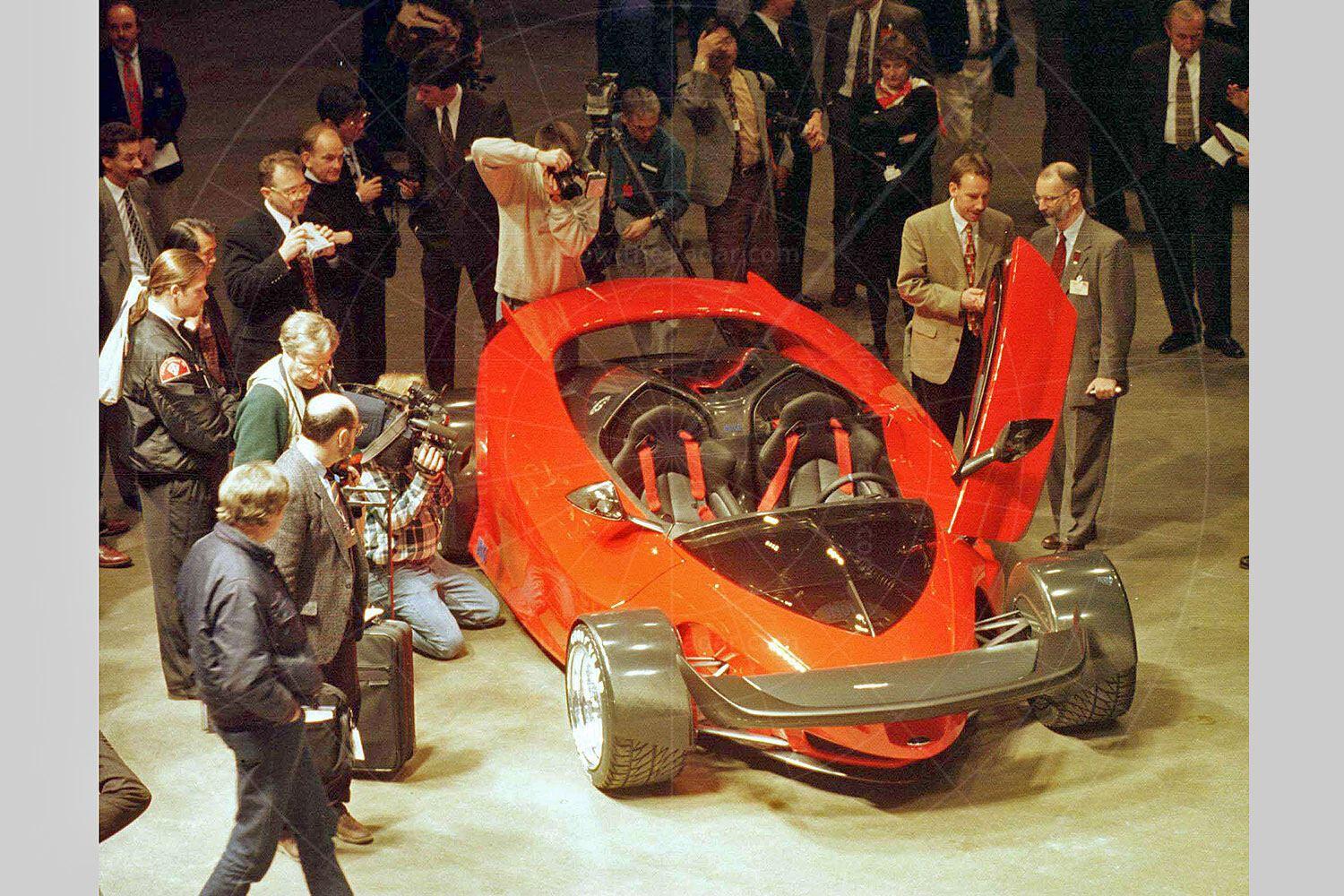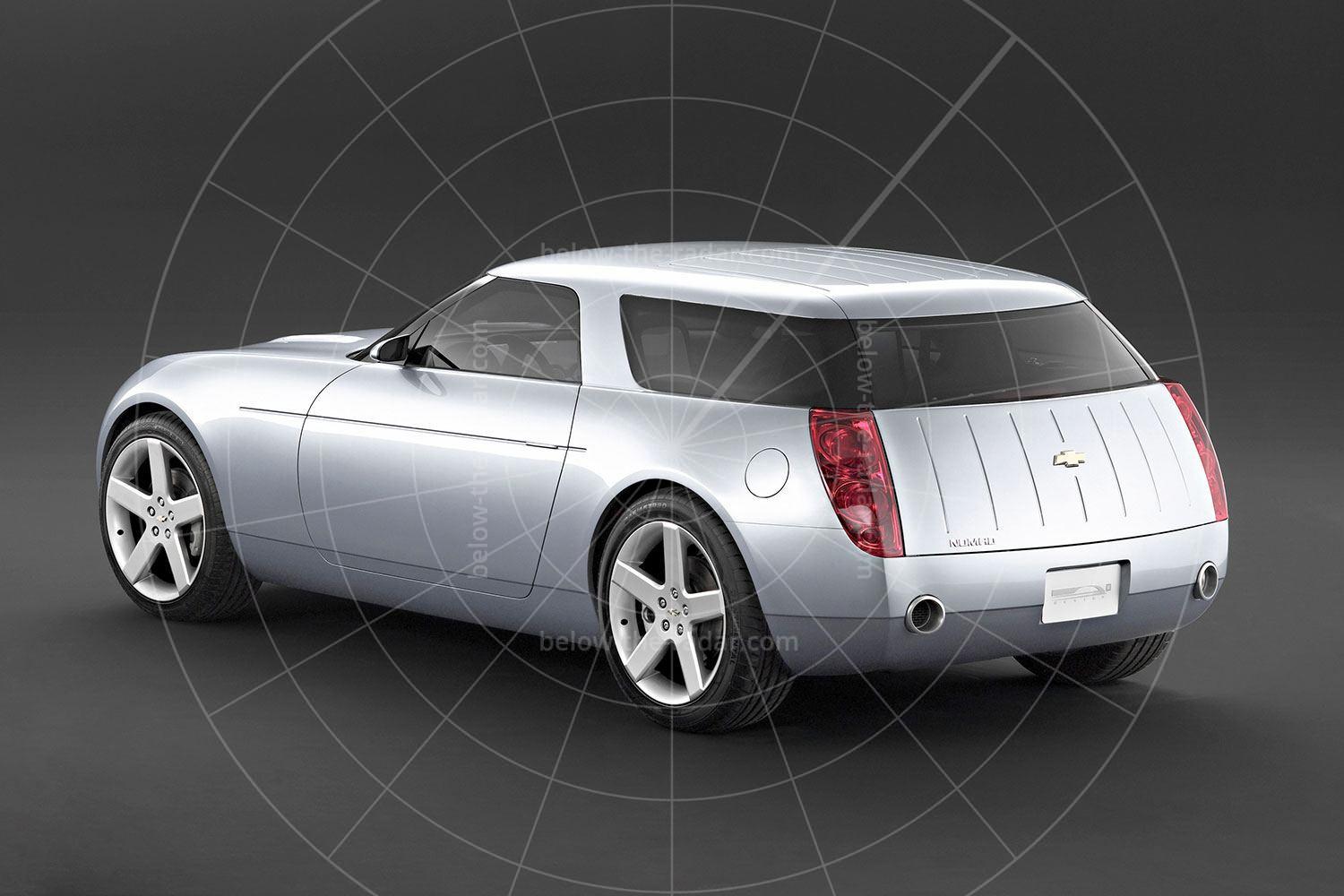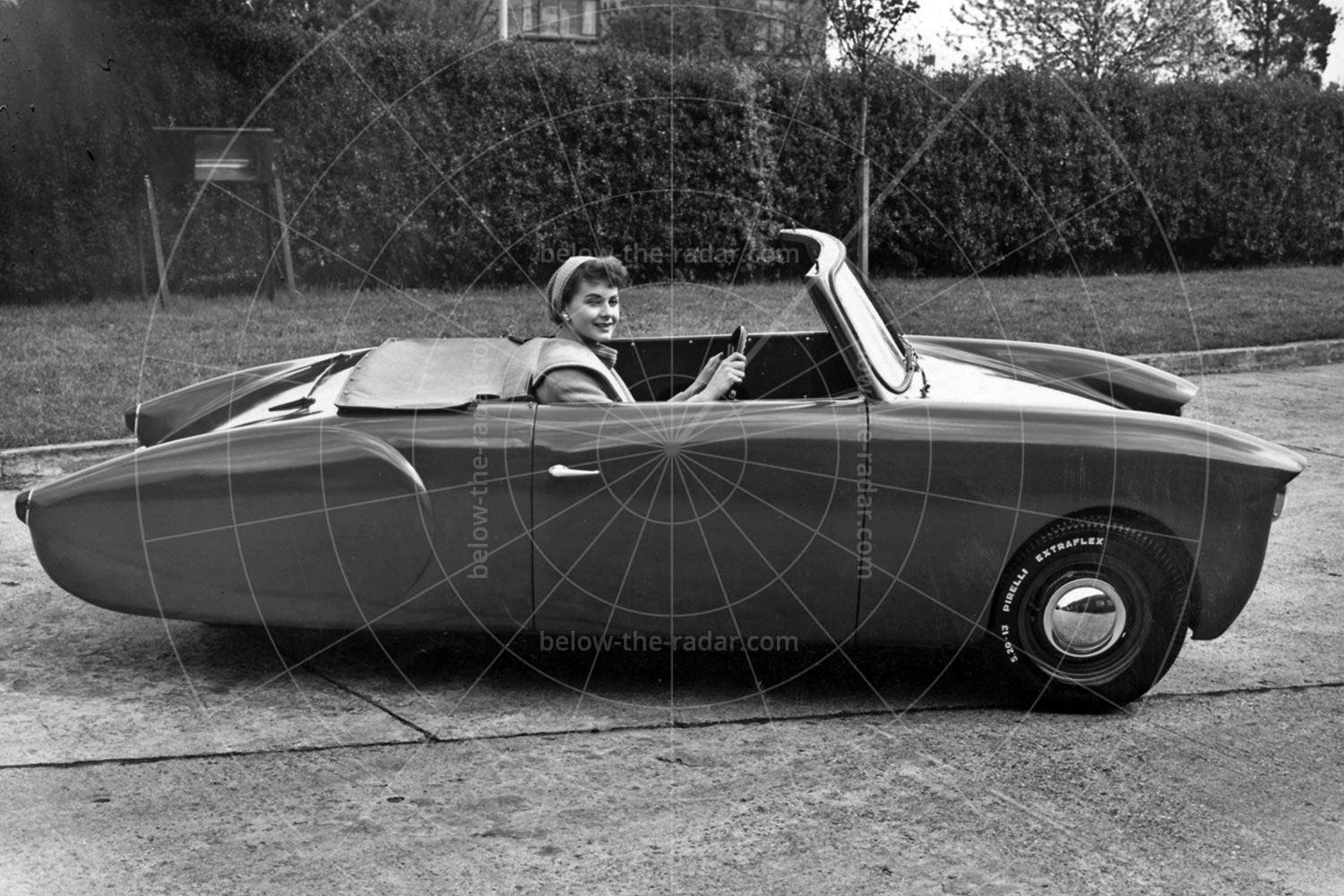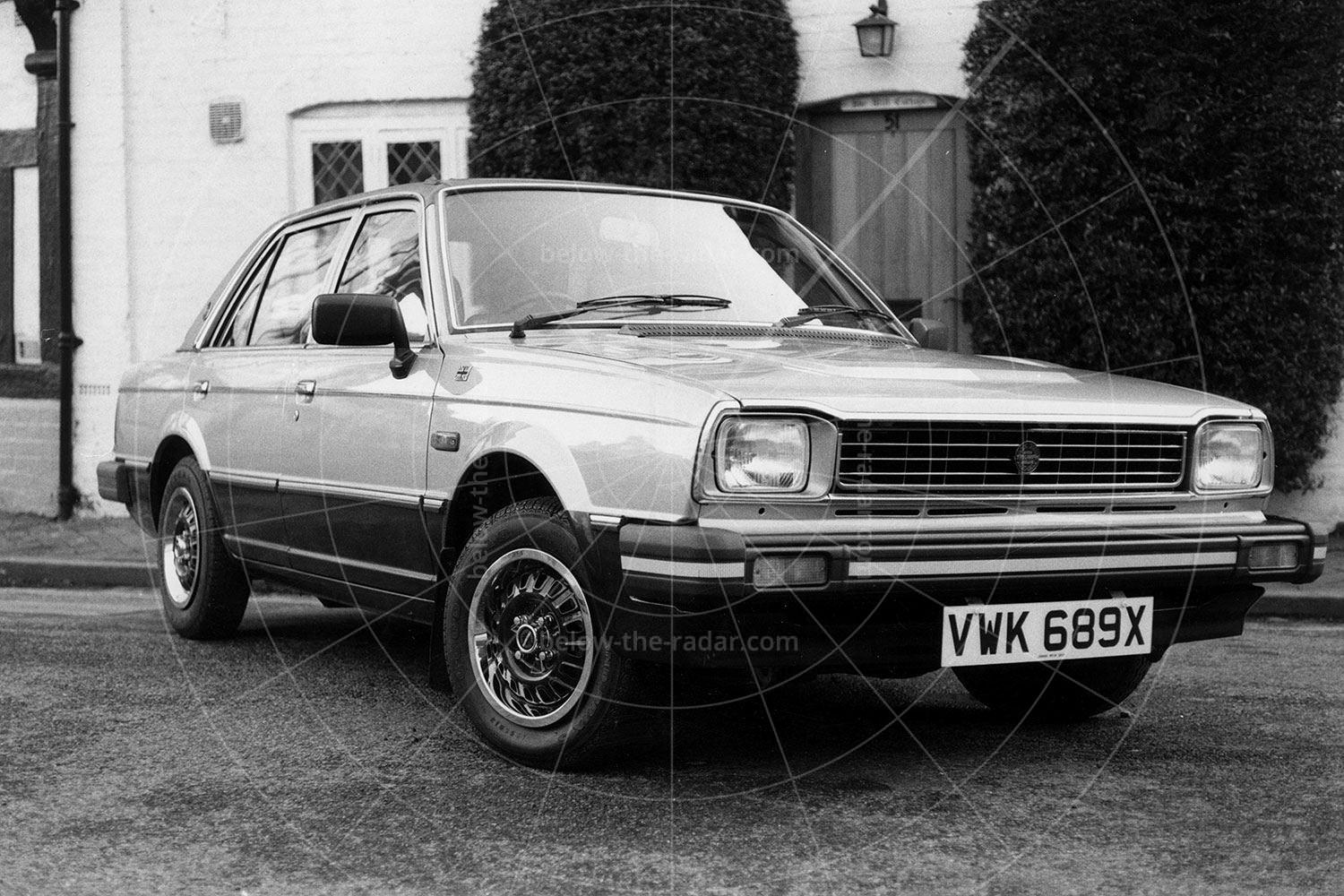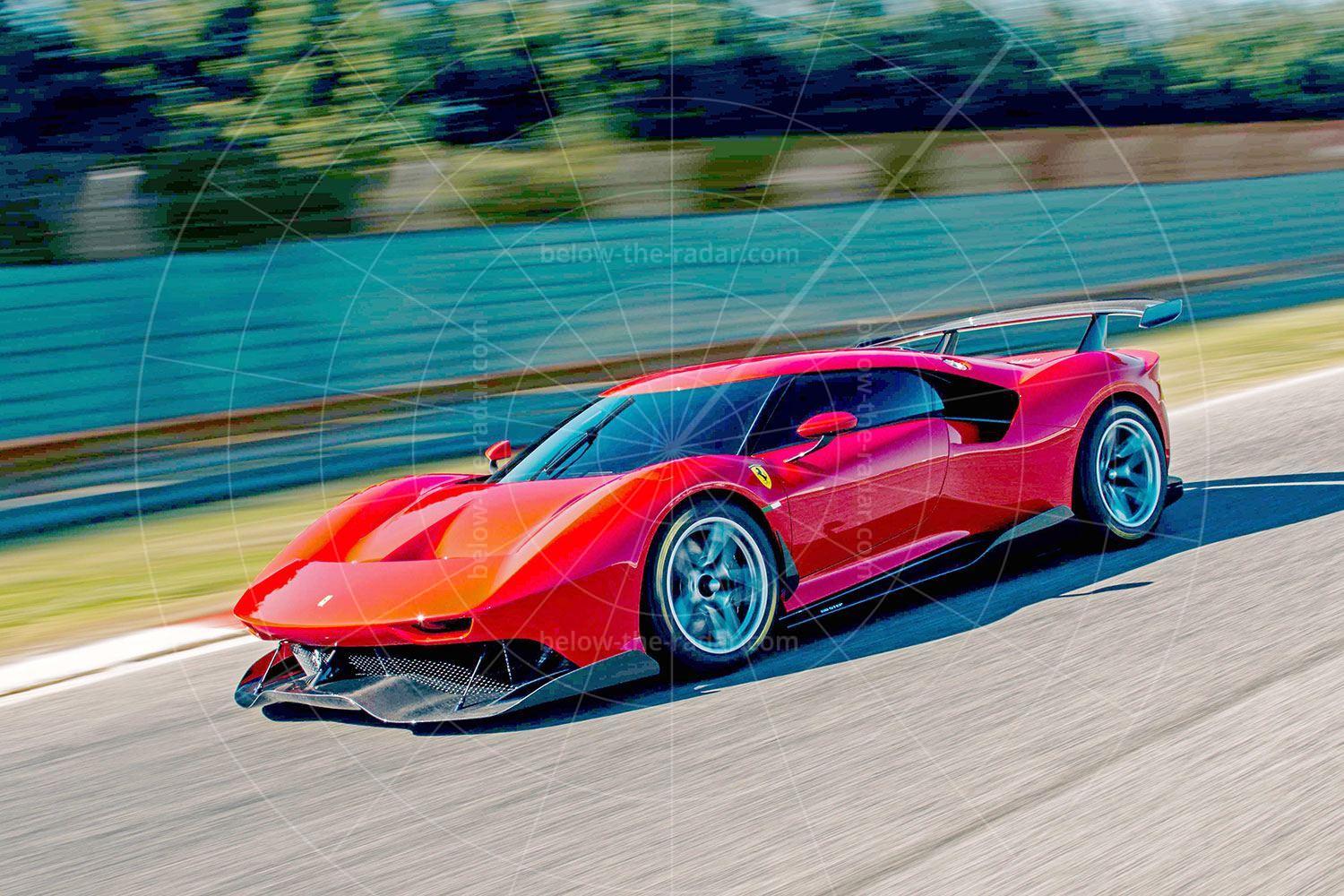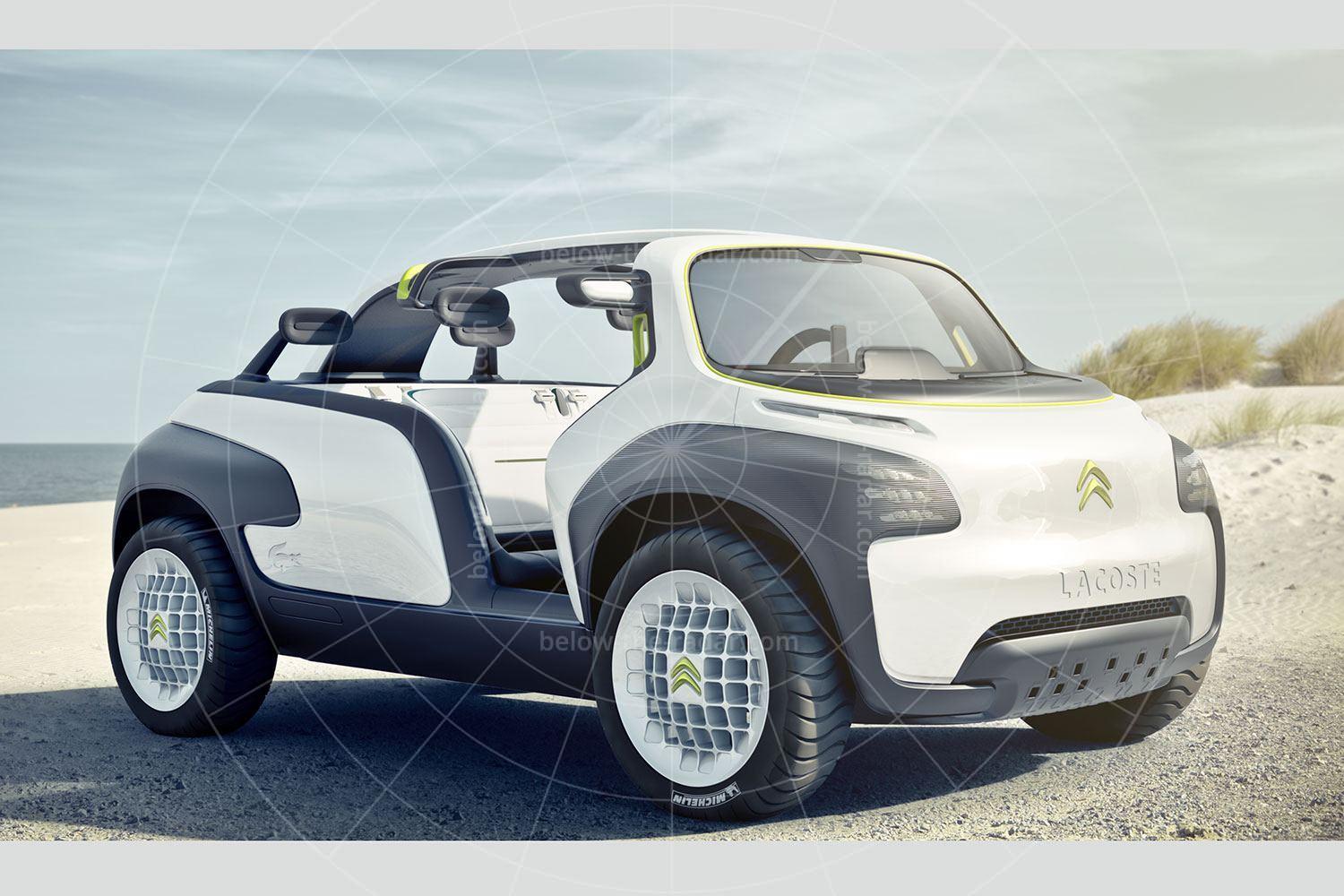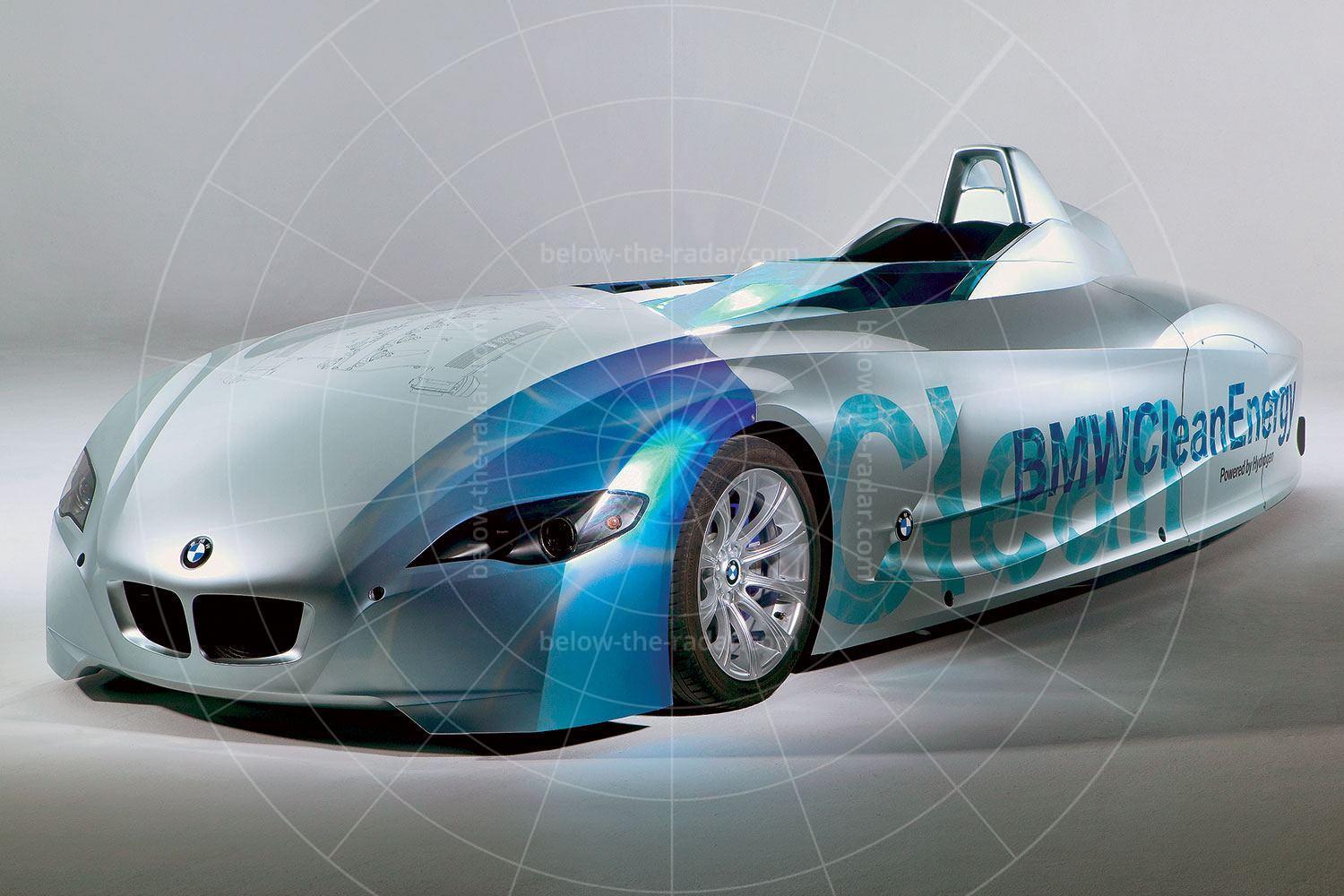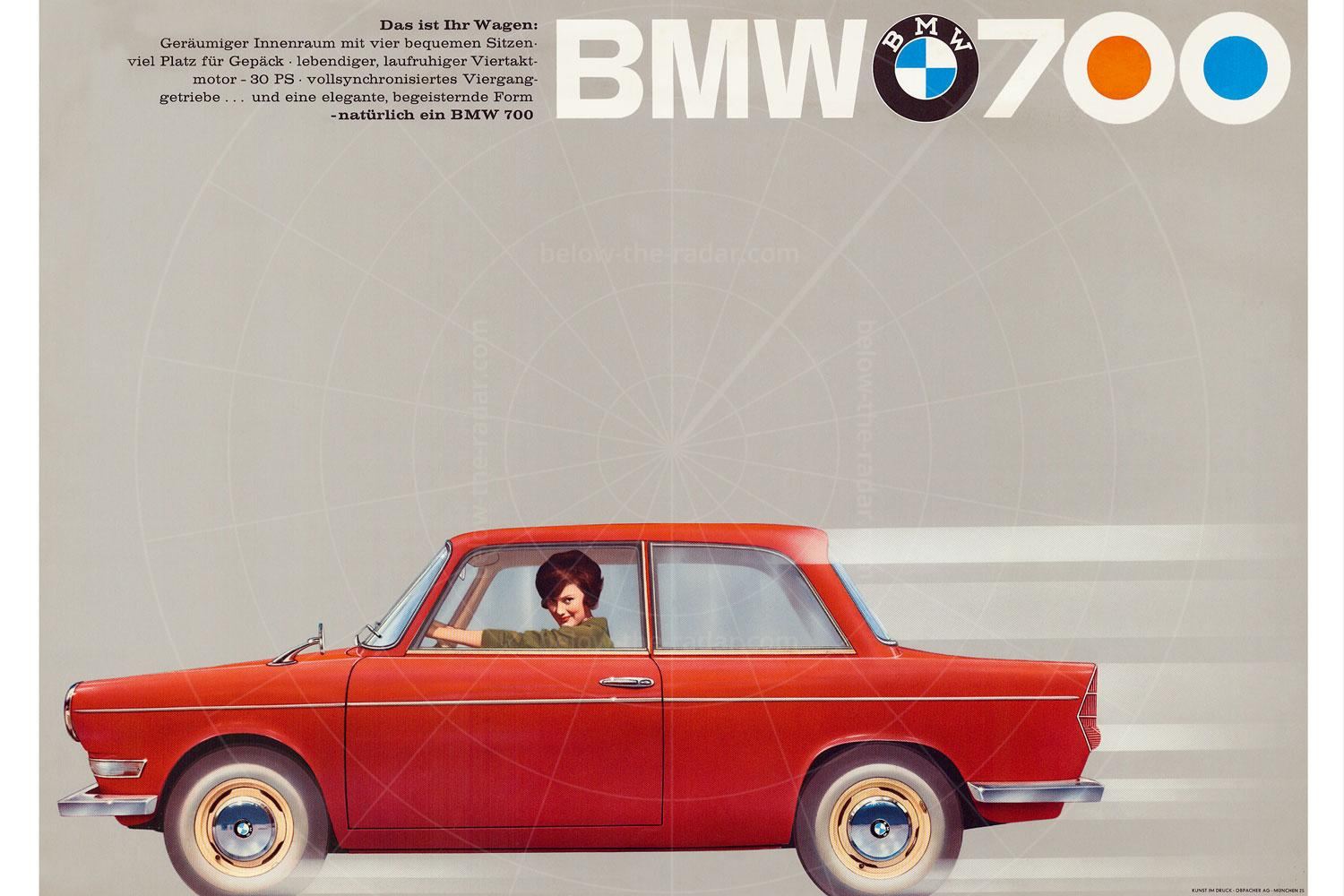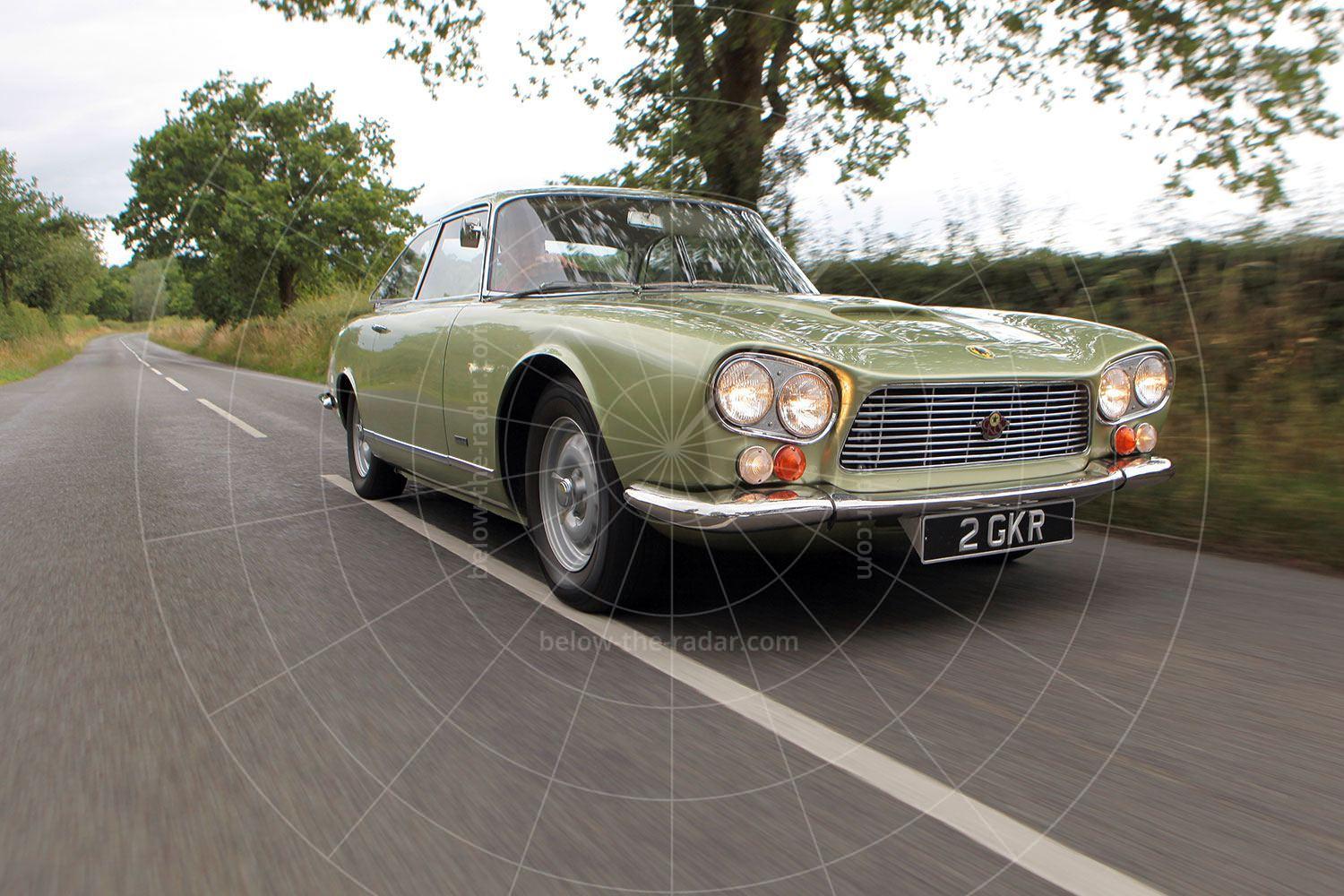The great thing about concept cars is that they often don’t have to give more than a token nod to practicality or usability. This was something that was clearly apparent with the Ford Indigo, which was closer to a single-seater racing car than it was to any road car. There was no weather protection, nowhere to stow any luggage and with a 6.0-litre V12 sitting behind the two occupants’ heads, the purpose of the Indigo was abundantly clear: to go as fast as possible. But the tragedy of the Indigo is that it was never built; something which could have been a real possibility if enough support had been shown for the project.
The Indigo had come about thanks to Jacques Villeneuve winning the Indy 500 in a Reynard-Ford. After Michael Schumacher had won the 1994 F1 World Championship in a Benetton-Ford, and Ford had failed to capitalise on its success, the company was adamant that it wouldn’t make the same mistake again. So once Villeneuve had claimed victory, Ford set about designing a concept which captured the spirit of Indycar racing, but which could potentially be put into very limited production.
Reynard was heavily involved in the development of the three Indigo concepts; one was fully functional and was built for testing and development, while the other two were non-running show cars. The development car was extensively tested at Silverstone at it was thanks to Reynard’s involvement that the aerodynamics, suspension and composites could be honed to perfection. The adoption of the 6.0-litre engine and Indycar semi-automatic gearbox dictated the car’s lines to an extent, and to keep the Indigo as close as possible in concept to an Indycar the wheelbase was identical at 2895mm.
Although the Indigo was engineered to weigh as little as possible, for some reason there was a relatively complex door assembly on each side. This allowed entry and exit via a scissor-style door opening and once inside there was very little space to enjoy; footwells were cramped and there wasn’t much room for anyone especially large. But the Indigo was a car of few compromises, so practicality and comfort weren’t very high on the list of priorities. That’s why the front end features that bizarre-looking aerofoil; not only does it keep the front of the car down on the Tarmac, but it also provides an area for the front lighting to be fitted. But because the fibre optic lights hidden within it were so directional, the main lighting had to be housed within the front of each wing mirror.
The interior was also stripped out, in a bid to save weight. But despite the fact that there was no roof and not even a proper windscreen, there was a minidisc player fitted, although once on the move the car’s occupants would be hard-pressed to hear anything over the roar of the engine sitting just inches from their ears. Four-point seatbelts kept the driver and passenger in place and a starter button fired the V12 up, just as in a race car.
The V12 engine was based on two V6s stitched together, and it was this powerplant which was later fitted to the Aston Martin DB7 Vantage. An all-aluminium unit with 48 valves and four overhead camshafts, this V12 was capable of producing over 500bhp if necessary. But even in standard form, with a mere 435bhp on offer, the Indigo was allegedly capable of sprinting from 0-62mph in just under four seconds, which was probably fast enough for most buyers.
Following race car practice, the V12 was bolted directly to the back of the Indigo’s monocoque and it carried all the suspension loads. Attached directly to the back of the engine was the transaxle, with the gearchanges activated by buttons on the steering wheel – although there was still a conventionally operated clutch.
Ford decided not to proceed with putting the Indigo into production and while the company still owns the running prototype, the two show cars were sold off in the early 2000s and they're now in private hands.
| Vital statistics | |
|---|---|
| Debut | Detroit, 1996 |
| Designers | Mark Adams and John Hartnell |
| Engine | Mid-mounted, 5972cc, V12 |
| Transmission | 6-speed sequential manual, rear-wheel drive |
| Power | 435bhp |
| Top speed | 180mph |

